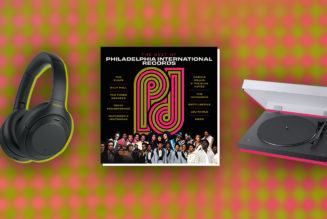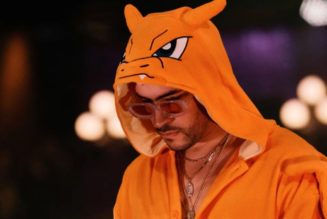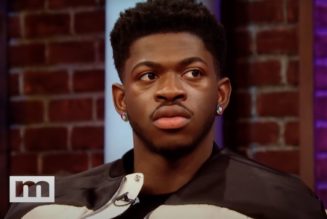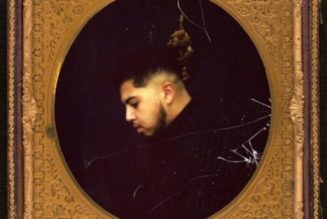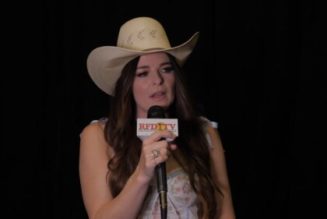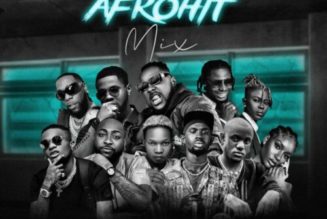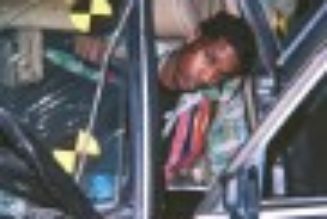
By Yasmine Shemesh
When Jennifer Lopez began recording her sophomore album, J.Lo, in 2000, she was in the midst of an incredible career high. With a $1 million salary for 1997’s Selena, she’d become the highest-paid Latina actress in Hollywood history and had no less than three new movies in the works. “Waiting for Tonight,” her dance-infused 1999 single, had become an anthem for the new millennium and was nominated for a Grammy. And she was about to make fashion history, thanks to a certain plunging Versace dress. In hindsight, given how long she’s been a multihyphenate, Lopez’s early ambidextrousness wasn’t one bit surprising. In fact, as she told Rolling Stone the following year, she felt like she hadn’t even started yet. “I’m looking forward to the ninth album, the 30th movie. I want to write more songs, tour, find the right roles, have my own family. That’s why I have so much energy. I know what lies ahead.”
Lopez brought the same resolve into acting, and her title performance in Selena served as the perfect jumping-off point into the pop-music sphere. Starting with the sultry, groovy single “If You Had My Love,” her debut, On the 6, also made Lopez — alongside Ricky Martin, Marc Anthony, and Enrique Iglesias — an important contributor to 1999’s Latin Explosion, which saw a substantial increase in the mainstream visibility of Latin music.
With everything she already accomplished, Lopez proved she could evolve artistically and do it well. But J.Lo represented the most significant turning point for Lopez yet, securing her status as an icon. Released on January 16, 2001, the same week The Wedding Planner opened in theaters at No. 1 at the box office, J.Lo debuted on the Billboard 200 at the very top spot. She was already a star; this — the only double No. 1 debut of its kind to date — made her intergalactic. With four singles, subsequent smash Murder Inc. remixes featuring Ja Rule, and a refreshed image that presented Lopez through a glamorous-yet-still-relatable lens, J.Lo became an influential catalyst that positioned its star to define nearly every corner of Y2K pop culture.
The shift was imminent when J.Lo’s lead single, “Love Don’t Cost a Thing,” dropped in December 2000. Sparkling and bass-heavy, with empowered lyrics that dismissed lavish gifts as the glue holding Lopez’s love in place, it was more confident than anything she’d released before. The press speculated the song was a wink at Lopez’s high-profile relationship with Sean “P. Diddy” Combs, who also co-wrote and produced four tracks on J.Lo. The music video saw Lopez — draped in gold jewelry, a cream duster, and caramel-gradient sunglasses — tearing off her luxuries until she was just about bare on the beach. J.Lo, the nickname given to her by fans, had arrived.
As a producer and co-writer, Lopez had creative control over J.Lo and leaned into R&B and hip-hop. On the 6 did too, but J.Lo was distinctly shaped by the influences and yielded some impressive collaborators. Lopez breathlessly yearns for a lover on the Diddy-produced slow jam “Come Over.” “Play,” co-written by Christina Milian with the singer on background vocals, combines a funky groove with ’80s dance sensibilities. Hip-hop meets Latin pop over a subtle sample of the Sugar Hill Gang’s “8th Wonder” on “I’m Going to Be Alright,” while Mambo-inspired “Cariño” and “Si Ya Se Acabó,” with flutters of flamenco guitar, fully embrace Latin sounds — another formative influence on J.Lo.
Hip-hop played an even larger role on the album through Murder Inc. remixes, particularly with “I’m Real” featuring Ja Rule. The song was a standout in its original iteration (with its now-infamous sample of Yellow Magic Orchestra’s “Firecracker,” which Mariah Carey planned to use for “Loverboy”), but the remix — an entirely new track, written by Ja Rule with backup vocals from Ashanti and a melody sampled from “Mary Jane” by Rick James — was a spectacular hit, becoming a signature for Lopez and carving out a place in the cross-genre prism of featuring rap on a pop song.
The model gained massive traction through the decade with, for example, Carey’s “Fantasy” remix featuring Ol’ Dirty Bastard and Aaliyah’s “Are You That Somebody?” featuring Timbaland. But as “I’m Real” dominated the airwaves and received critical acclaim, Lopez’s duet with Ja Rule helped cement the lasting power of the pop/hip-hop composite. Over the next decade, everyone from Beyoncé (“Crazy in Love” featuring Jay-Z) and Usher (“Yeah!” featuring Lil Jon and Ludacris) to Justin Timberlake (“Like I Love You” featuring Clipse) tapped in. The success of “I’m Real” led to other J.Lo remixes, including “I’m Gonna Be Alright” with Nas and “Ain’t It Funny” with Ja Rule and Cadillac Tah. “It’s gonna put her in another zone,” Ja Rule told MTV at the time. “After this one, they gonna be expecting hot crossover R&B joints from J. Lo.”
Lopez kept them coming after J.Lo: “All I Have” featuring LL Cool J; “Jenny from the Block” featuring Jadakiss and Styles P; “Get Right” featuring Fabolous. With 2018’s “Dinero,” pairing her with DJ Khaled and Cardi B, and 2019’s “Medicine” featuring French Montana, Lopez continues to bridge pop and hip-hop today. She’s also still blazing genre-crossing trails, dipping pop into trap and reggaetón: “Te Guste,” a 2018 duet with Bad Bunny, was described as a “trap-pop gamechanger,” and her two-track collaboration with rising Colombian star Maluma, “Pa’Ti” and “Lonely,” appears on the soundtrack for the forthcoming romantic comedy, Marry Me.
While J.Lo was contributing to the trajectory of early 2000s music, Lopez herself was making her mark in fashion and beauty. After wearing the palm-print chiffon Versace dress to the 2000 Grammys — and inadvertently spurring the invention of Google image search — Lopez’s style quickly permeated into the era’s aesthetic. Athleisure, nude tones, fur-lined puffer jackets, hoop earrings, French-tip nails, and high-heeled Timberland boots proudly channeled her Nuyorican roots and fused them with Hollywood glamour. Lopez rocked the looks in her music videos, which now serve as chic time capsules, from the pink terrycloth shorts set in “I’m Real (Remix)” to the long fur coat and taupe bucket hat in “Play.”
Months after J.Lo was released, Lopez launched her clothing line: J.Lo by Jennifer Lopez reflected her own style and included sweatsuits, bedazzled tops, and denim. “The voluptuous woman is almost ignored,” Lopez said during a press conference. “I want to offer clothes that are wonderfully designed and will fit women of all sizes.” It’s hard to overstate how the visibility of Lopez’s body inspired a cultural shift. The ’90s, especially, were the era of “heroin chic,” an impossible standard of beauty that excluded anyone who wasn’t 5’10” and a size zero. With so much attention fixed to her natural curves, Lopez — repeatedly asked to lose weight early in her career (she refused) — undeniably contributed to the media’s more inclusive view of all body types. Her clothing line was a physical realization of that.
Lopez, of course, is now at the helm of a multimillion-dollar empire spanning film, television, music, fashion, and beauty. She is one of the most versatile, influential, and recognizable artists in the world, not only increasing Latin representation in the entertainment industry through the strides she took in the early 2000s but helping to redefine the entire media landscape along the way. She’s an icon — an important one. And J.Lo, with the reverberating impact it made, was a vital stepping stone in that path: Because of that album, those three letters are forever embedded in the vernacular of contemporary pop culture.

